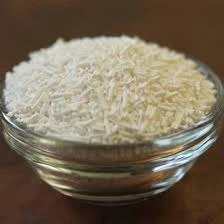
Understanding the Process of Using Cyanide for Efficient Gold Extraction Techniques
The Use of Cyanide to Extract Gold A Comprehensive Overview
Cyanide is a highly toxic chemical compound that has been utilized in the mining industry for over a century to extract gold from ores. This process, known as cyanidation, has been pivotal in making gold mining economically viable by allowing for the efficient extraction of this precious metal even from low-grade ore. Here, we explore the mechanics of cyanide in gold extraction, its implications for the environment, and alternative methods being researched and employed.
The Cyanidation Process
The cyanidation process begins with ore crushing and grinding to liberate gold particles from the surrounding rock. Once the gold is liberated, cyanide solution is added to the crushed ore in large tanks. The cyanide forms a complex with gold ions, allowing the gold to be dissolved into the solution. The resulting gold-cyanide complex is then separated from the waste material and subjected to further processes to recover the gold.
The effectiveness of cyanide in extracting gold is attributable to its ability to form stable complexes with gold ions. This allows even minute quantities of gold to be extracted from ore, which would otherwise remain unaccounted for. The resulting solution is then treated with zinc dust or activated carbon, which displaces the gold from the cyanide solution, allowing for its collection and purification.
Environmental Concerns
While cyanidation has revolutionized the gold extraction process by increasing yield and efficiency, it raises significant environmental concerns. Cyanide is extremely toxic, hazardous to both human beings and wildlife, leading to catastrophic events when accidents occur. There have been numerous instances of cyanide spills in mining operations, resulting in the contamination of water sources, flora, and fauna.
cyanide to extract gold

Moreover, the chemical's persistence in the environment can lead to long-term ecological damage. Efforts to mitigate these risks involve the implementation of stringent regulations, advanced containment methods, and the development of more environmentally friendly alternatives to cyanide in gold extraction.
Alternatives to Cyanide
In recent years, increased awareness and concern regarding the ecological impacts of cyanide have led to research on alternative gold extraction methods. Several promising techniques have emerged, including the use of thiosulfate, ammonium thiosulfate, and even bioleaching with certain types of bacteria. These alternatives aim to reduce or eliminate the need for cyanide while still maintaining efficient gold recovery rates.
Thiosulfate, for example, has been found to be effective in leaching gold from ores with lower toxicity compared to cyanide. Additionally, the use of bioleaching involves harnessing the natural metabolic processes of specific bacteria that can extract metals from ores, potentially providing a sustainable and eco-friendly solution for gold extraction.
Conclusion
Cyanide has undoubtedly played a critical role in the gold mining industry, allowing for the extraction of gold on a scale that has reshaped economies and industries worldwide. However, the associated environmental and health risks cannot be overlooked. As the industry continues to evolve, the search for safer, more sustainable alternatives to cyanide is paramount. Balancing economic benefits with environmental stewardship will be crucial in ensuring that gold extraction practices do not compromise the health of our planet and future generations. Continued innovation and adherence to strict regulatory practices will be essential in this ongoing endeavor.
-
nitrile-rubber-honoring-strict-production-standardsNewsAug.22,2025
-
aspartame-ingredients-honoring-food-safety-valuesNewsAug.22,2025
-
fertilizer-for-balanced-plant-nutritionNewsAug.22,2025
-
cyanide-gold-processing-with-high-purity-additivesNewsAug.22,2025
-
formic-acid-in-textile-dyeing-applicationsNewsAug.22,2025
-
aluminum-hydroxide-gel-in-skincare-productsNewsAug.22,2025
-
Regulatory Compliance for Global Mining Chemicals UseNewsAug.12,2025
Hebei Tenger Chemical Technology Co., Ltd. focuses on the chemical industry and is committed to the export service of chemical raw materials.
-

view more DiethanolisopropanolamineIn the ever-growing field of chemical solutions, diethanolisopropanolamine (DEIPA) stands out as a versatile and important compound. Due to its unique chemical structure and properties, DEIPA is of interest to various industries including construction, personal care, and agriculture. -

view more TriisopropanolamineTriisopropanolamine (TIPA) alkanol amine substance, is a kind of alcohol amine compound with amino and alcohol hydroxyl, and because of its molecules contains both amino and hydroxyl. -

view more Tetramethyl Thiuram DisulfideTetramethyl thiuram disulfide, also known as TMTD, is a white to light-yellow powder with a distinct sulfur-like odor. It is soluble in organic solvents such as benzene, acetone, and ethyl acetate, making it highly versatile for use in different formulations. TMTD is known for its excellent vulcanization acceleration properties, which makes it a key ingredient in the production of rubber products. Additionally, it acts as an effective fungicide and bactericide, making it valuable in agricultural applications. Its high purity and stability ensure consistent performance, making it a preferred choice for manufacturers across various industries.





